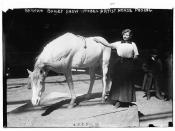For centuries, there have been those few humans who, through some flaw in a gene or other birth defect, are born outside of the undefined, yet recognizable boundaries of "normal". Mentally and/or physically, they are different from those around them. Some are taller than normal; some are smaller than normal. Some are physically joined to a twin sibling. Some have missing or disproportionate body parts. Others are merely mentally slow. Sadly, those of our species who are found to be outside the borders of normality in appearance and action are frequently stared at, studied, exhibited, exploited, and most often, feared. In the 19th century, the rise of free enterprise and fluidity of the middle class created a demand for exhibits like freak shows as a way to discharge anxieties, convictions, and fantasies about the unknown and unfamiliar.
There is little doubt that they have been often exploited throughout history. In the middle ages, they were seen as "prodigies", signs of God's displeasure and/or dominion over the earth, and were thus exploited by religious zealots.
Later, they were scientific curiosities, probed, prodded, and dissected for further study(Adams). However, during the period of 1840-1920 they dominated the stage and were seen as entertainers. Many modern advocates of humanity will say that they were displayed and exploited solely for monetary gain(Thomson "Extraordinary Bodies: Figuring Disability in American Culture and Literature").
To view them was considered perverse, and in an era of undulating values and revolution, their presence was most appreciated. Men such as the renowned Phineas Taylor Barnum searched through the entire world to find these incredible human oddities. They were pinheads, such as "Zip, the What Is IT?" and the "Ancient Aztec Children"; they were the Hilton Sisters, Violet and Daisy, Siamese-twin vaudeville performers and movie stars; they were "General" Tom Thumb,



Interesting and fairly well written
... just need to be sure that references are cited properly in the text.
0 out of 0 people found this comment useful.